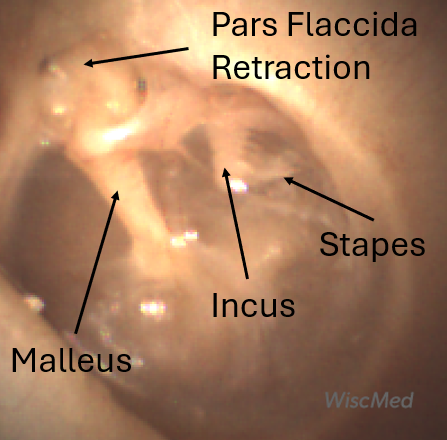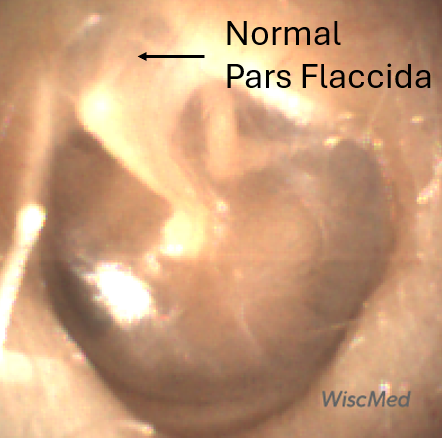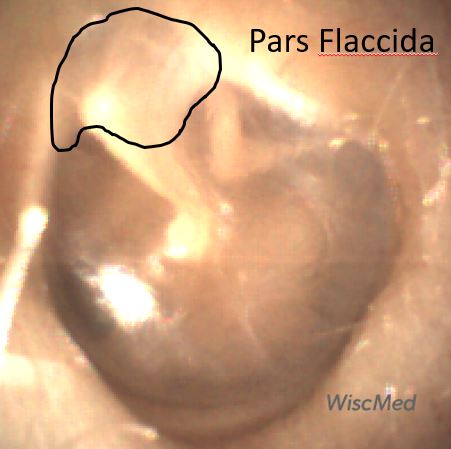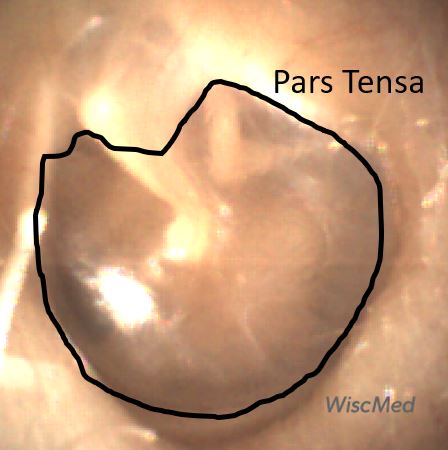
Pars Flaccida Retraction – April 18, 2024
An attendee at the Urgent Care Conference visited the WiscMed tradeshow booth. The following image of her left ear was obtained with the WiscMed Wispr digital otoscope.
Which of the following is true?
- She’s had an eardrum perforation in the past.
- Her ear is normal.
- She should be referred urgently to an otolaryngologist (ENT).
- The pars flaccida portion of her tympanic membrane (TM, “eardrum”) is retracted.
Answer: 4. The pars flaccida portion of her tympanic membrane (TM, “ear drum”) is retracted.
- Pars Flaccida Retraction
- Normal Pars Flaccida
The attendee has a retraction of the pars flaccida portion of her eardrum. The eardrum consists of two regions, the pars flaccida and the pars tensa.
- Pars Flaccida Region
- Pars Tensa Region
The pars tensa is the portion of the tympanic membrane that is the largest. It’s what people tend to think of when they think of the “eardrum.” As the name suggests, it is “taut,” much like if you stretched plastic wrap on top of a bowl. You could also imagine the pars tensa to be similar to a drum surface. It is the portion of the eardrum responsible for translating sound waves into mechanical movement.
The pars flaccida, as the name suggests, is less “taut” and also thicker. It drapes across the superior portion of the malleus. Although it does not have an active role in sound wave transcription, it is necessary to provide complete coverage of the middle ear space and allow for the proper functioning of the pars tensa.
From a clinical perspective, the pars tensa gets most of our attention. This is the place where we would expect to see perforations, effusions, and the characteristic bulging of acute otitis media.
The pars flaccida may be the first place that bulging of the tympanic membrane is seen due to increased pressure in the middle ear space. The pars flaccida is where most eardrum movement would be appreciated if evaluating mobility of the eardrum via either pneumatic otoscopy or a Valsalva maneuver.
A pars flaccida retraction is of little clinical significance. If severe, it could limit mobility of the incudomalleolar joint and cause hearing loss. There is no indication that the attendee has had an eardrum perforation. There is no indication for a referral to otolaryngology.
Here is the complete video exam































































































































































































